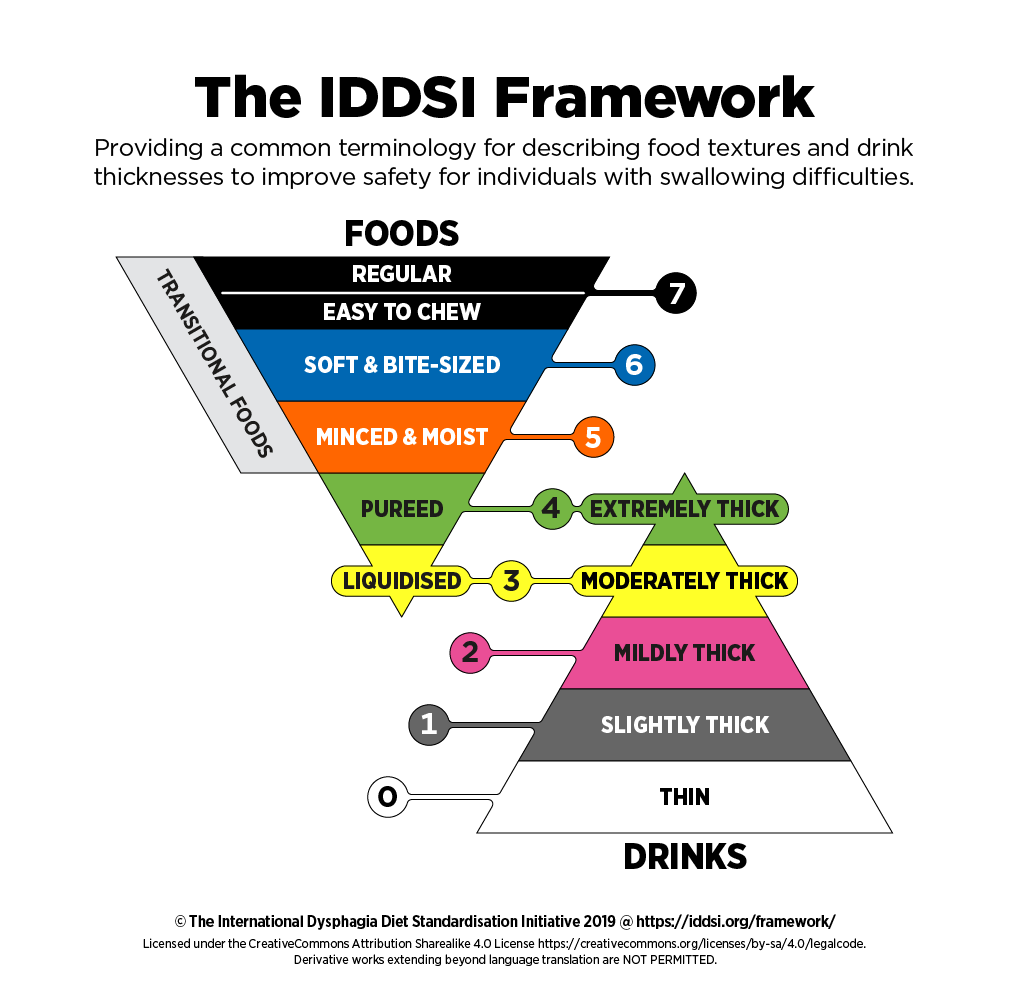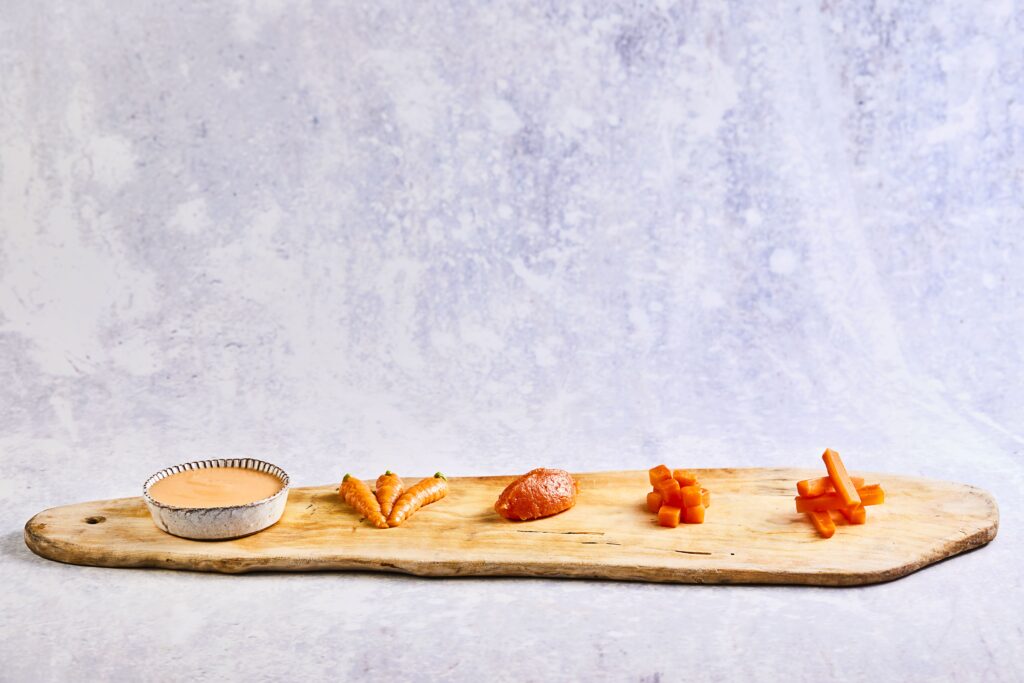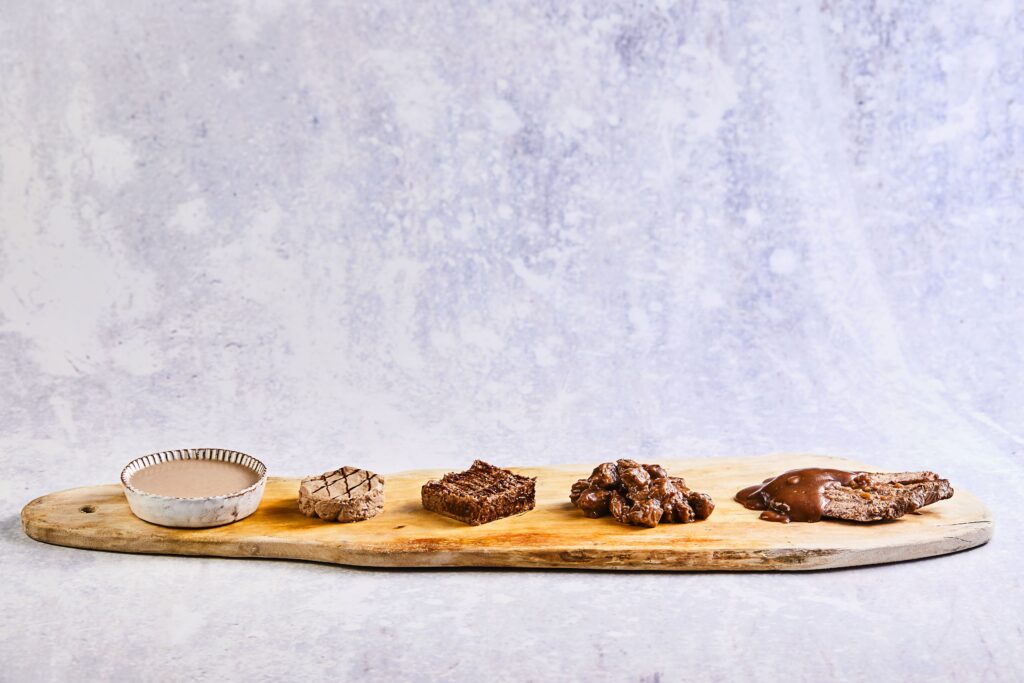The IDDSI (International Dysphagia Diet Standardisation Initiative) Framework was introduced in April 2019 and provides a common terminology to describe food textures and drink thickness. It consists of a continuum of 8 levels (0 – 7), where drinks are measured from Levels 0 –4, while foods are measured from Levels 3 – 7.
The guidance also includes detailed information about how to test and ensure that each level of liquid or food is acceptable for patients at that level to consume safely. IDDSI Testing Methods are intended to confirm the flow or textural characteristics of a particular product at the time of testing. Testing should be done on foods and drinks under the intended serving conditions (especially temperature).
This article is not exhaustive and we recommend that you read more about the IDDSI Framework at iddsi.org as well as downloading the free app.

What Is Dysphagia?
The normal swallowing process is controlled by nerves and muscles, which ensures that the food in your mouth goes safely into your stomach, without really having to think about it. However, for people living with dysphagia, swallowing isn’t coordinated properly, so when food and liquid goes into the mouth, there can be a delayed response, making eating and drinking a difficult process, with the risk of food, fluids and saliva going down the wrong way and even going into the lungs (aspiration). This can increase
the risk of choking, getting a chest infection and may even lead to pneumonia.
There are a number of health conditions that can lead to dysphagia, such as dementia, stroke, Parkinson’s or for those recovering post-surgery. A Texture Modified Diet can be introduced to support people to swallow safely. This will contain carefully selected foods of an appropriate consistency, which can be more easily managed by a person with dysphagia, allowing for a safer swallow.
IDDSI Food Levels Explained
The IDDSI framework consists of a scale of 8 levels, from level 0 to level 7 and applies to both drinks and food. Drinks are measured from Levels 0 – 4, while foods are measured from Levels 3 – 7. See the below images of carrots and braised steak throughout levels level 3 and 7 to help illustrate the difference between levels.


LEVEL 3 – Liquidised
Level 3 food should be puréed separately and passed through a chinois/sieve to ensure it is lump free. It can be served in a ramekin. Always check the consistency of the food before serving. It should be completely smooth and lump free.
How to Test Level 3 Foods
- Drips slowly in dollops through the prongs of a fork.
- Prongs of a fork do not leave a clear pattern on the surface of food.
- Spreads out if spilled onto a flat surface.
- Easily pours from a spoon when tilted.
- Does not stick to a spoon.
LEVEL 4 – Pureed
Level 4 food should be able to hold its own weight but should not be sticky. It can show some very slow movement under gravity, but cannot be poured. The food can be piped, layered or moulded. Liquid must not separate from the food. All elements of the meal should be puréed separately and be completely smooth and lump free.
How to Test Level 4 Foods
- To check it is smooth, taste the purée, rolling the food around between the tongue and the
roof of the mouth. - Food sits in a mound or pile above the fork.
- A small amount may flow through and form a tail below the prongs of a fork, but it does not flow or drip through continuously.
- The prongs of a fork can make a clear pattern on the surface of the food and the food retains the indentation of the fork.
- Cohesive enough to hold its shape on a spoon.
- A full spoonful must drop off the spoon, when the spoon is tilted; a very gentle flick may be needed to dislodge the food from the spoon.
- The food should slide off easily, with very little food left on the spoon.
- May spread out slightly or slump very slowly on a flat plate.
- If the food does not fall off the spoon when tilted or stick to the spoon, then it is too thick.
LEVEL 5 – Minced & Moist
Food should be soft & moist with no separate thin liquid. The pieces of food should be no bigger than 4mm in size. This can be checked by ensuring the food fits in between the prongs of a standard fork. Measure the distance between the prongs to be sure it is 4mm. Food needs to be pre mashed and plated before reaching the resident. Biting is not required and particles of food can be easily squashed with the tongue.
How to Test Level 5 Foods
- When pressed with a fork the particles of food should easily be separated and come through the prongs of a fork.
- Food can easily be mashed with little pressure.
- The food is cohesive enough to hold its shape on a spoon.
- A full spoonful should slide off the spoon when tilted, turned sideways or shaken lightly.
- The food should slide off easily with very little food left on the spoon – it should not be sticky.
LEVEL 6 – Soft & Bite Sized
Bite sized pieces of all food items must be no bigger than 15mm and soft and tender throughout, with no separate thin liquids. Gravy and sauces must be very thick. Level 6 food can be mashed and broken down with the pressure of a fork or spoon, before serving and stay in the mashed shape when the fork is removed. Biting is not required, but chewing is.
How to Test Level 6 Foods
- Pressure from a fork held on its side can be used to cut or break this texture into smaller pieces.
- When a sample of food 15mm x 15mm is pressed with the base of a fork or spoon with 390g of pressure, the food squashes and changes shape, and does not return to its original shape when the fork is removed.
- Pressure from a spoon held on its side can be used to cut or break this texture into smaller pieces.
LEVEL 7 – Regular Food (Easy to Chew)
In response to testing method for foods that are “soft” but with no particle size restriction, IDDSI have announced level 7 regular easy to chew. This new subcategory of Level 7 is designed to meet the needs of individuals who do not have an increased choking risk but might benefit from softer choices. This level is suitable for individuals who have the ability to regulate bite size and their pace of eating and do not exhibit mealtime behaviours that might increase their choking risk.
How to Test Level 7 Foods
- Foods should be soft and tender and can be cut or separated easily with the side of a fork or spoon.
- Foods do not need to be cut or presented in any specific particle size.
The Country Range Guide To The IDDSI Framework
For more texture modified meal solution recipes, inspiration and advise from IDDSI specialist Andy Cullum, take a look at the Country Range guide to the IDDSI Framework.

